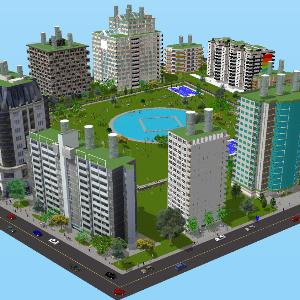 Andy E. Williams Feb 25, 2018 07:12 | Holistic community design sounds appealing in that there are always opportunities to gain value through aligning the design of one part of a system with the design of another part of a system. But a fundamental question is ... how can you objectively tell what holistically is the best community design? Should there be a pond? Or should does it need to be a lake for that size and density of community? Should the housing be high density? Or should it be integrated with renewable energy and aquaponics? How do you prevent this approach from becoming one person's subjective vision of sustainability rather than an objectively optimized vision of sustainability that an entire collective effort can be organized around? |
 Emil Jacob Mar 22, 2018 03:49 | Proposal contributor Hi Andy, thank you for your comments and questions. Below are my answers where I am currently with the HCD model. how can you objectively tell what holistically is the best community design? Should there be a pond? Or does it need to be a lake for that size and density of community? There is no finite answer to what makes the best community design but we do know that the presence of water is beneficial for mental and physical health. In terms of size there is research needed to come up with concrete numbers. The example I am looking at is a rectangular area of about 300x300 FT. There would need to be a limit how much surface the buildings should take up in to in order to keep the green area to a minimal size that accommodates (a portion of) some 10,000 residents. Similarly the pond/pool needs to be large enough to serve the residents.
There can be a number of HCD sizes from small - about 3000 residents - medium of 5-6000 residents - and large at about 10,000 residents. Should the housing be high density? Or should it be integrated with renewable energy and aquaponics? You are right about the density that it needs to be measured flexibly - to account for presence of aquaponics. So for example if the standard would be 10k residents per 300x300 FT, the number could be lowered to 9k residents if one of the buildings is for aquaponics.
How do you prevent this approach from becoming one person's subjective vision of sustainability rather than an objectively optimized vision of sustainability that an entire collective effort can be organized around? to make the model objectively optimized for sustainability as well as for high quality of life it is important to have a good balance of requirements as well as flexibility. In the image below I am showing a "checklist" that can be developed to help the city, the developer and the consumer to rank the elements of sustainability and quality of life in the project. My hope is that cities will use this model and designate / incentivize certain areas to be developed as holistic communities. Among the benefits to the city are greater revenues and lower costs as it is more effective to provide services, especially roads and water, than in the traditional model of random/spread out development.
Happy to discuss further any questions, ideas you may have.
Thanks, Emil |


